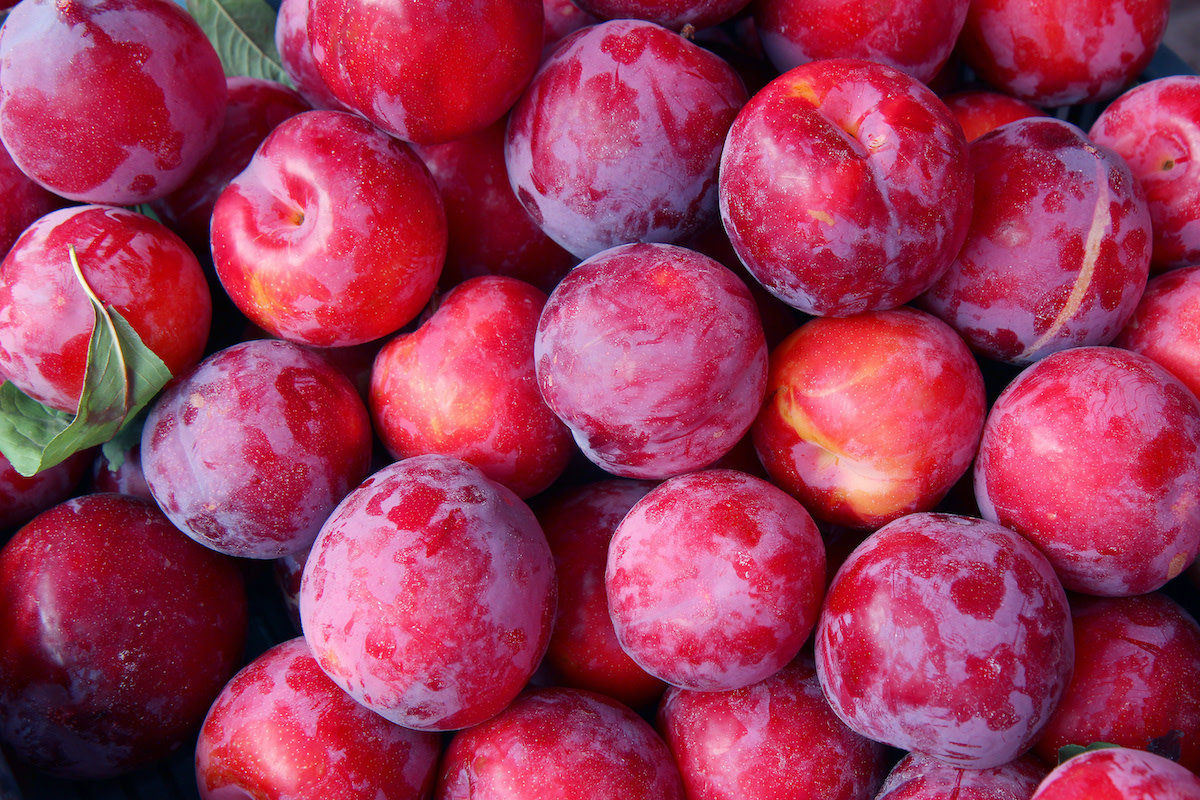13 Types of Plums: Guide to Different Types of Plums
Written by MasterClass
Last updated: Jan 24, 2022 • 3 min read
The world abounds with plum varieties that span from European plums to Japanese plums. Learn about the many varieties of plums and their uses in jellies, jams, and fruit plates.
Learn From the Best
What Is a Plum?
A plum is a type of stone fruit in the subgenus Prunus that is characterized by an epicuticular wax and, in most plum varieties, a sweet taste. They grow on plum trees, which are fruit trees closely related to those that produce similar stone fruits like apricots and bush cherries.
Most European plum trees produce round fruit, while many Chinese and Japanese plums take an oblong shape. Both the skin and flesh of plums come in a variety of colors, which do not necessarily predict a sweet flavor. Plums commonly grow in temperate climates and typically ripen in late summer.
13 Types of Plums
From the common varieties you see in your grocery store to hard-to-find varieties at farmers’ markets, plums come in a range of colors and flavors.
- 1. Elephant heart plums: One of the most common plums in grocery stores, this Japanese plum variety has reddish-purple skin and red flesh. When ripe, its flesh is soft, sweet, and juicy. It is a clingstone plum, which means its pit clings to the soft flesh surrounding it.
- 2. Black ruby plums: A popular black plum found in grocery stores, black rubies are among the few plum fruits from China or Japan that have freestone pits, which means the plum pit readily separates from the surrounding skin. They also ripen earlier than most other plums (early-to-mid summer as opposed to late summer), which gets them on store shelves faster.
- 3. Black beauty plums: This Japanese variety has reddish-black skin and firm flesh. Fresh plums of this variety taste sweet, but they can be flavorless if picked too early.
- 4. Simca plums: Another popular red plum variety, Simcas have juicy flesh. A natural coating of wax makes the skin of some Simca plums appear blue. They are clingstones with a golden flesh color.
- 5. Black amber plums: These Japanese plums feature a deep purple skin that borders on blue. Their firm, amber flesh is more tart than most Japanese plums.
- 6. Greengage plums: These small, round plums are a European variety featuring green skin and green flesh. They are one of the only plum varieties that still have green skin at the point of ripening. What's more, they are some of the sweetest plums you can buy.
- 7. Moyer plums: This common freestone European plum has purple skin and orange-yellow flesh. Many French prunes start off as Moyer plums.
- 8. Damson plums: This dark purple plum grows throughout Europe. They are more astringent than Moyer plums, yet they offer a sweet aftertaste. Expect a yellow-green flesh color.
- 9. Santa Rosa plums: This Japanese plum cultivar was developed in Santa Rosa, California, from which it takes its name. Santa Rosa plums feature both red skin and red flesh. They are among the juiciest plums on the market.
- 10. Mirabelle plums: These yellow plums are native to France, where they are often turned into jellies and jams. Also known as cherry plums, they are as sweet as any plum you can find, yet they rarely appear in American grocery stores. Their soft flesh makes it difficult to transport them without causing damage.
- 11. Italian prune plums: These Italian plums are sweet when eaten fresh off the tree, but most get turned into prunes or sugar plums, which are dried plums with added sugar. (These are not to be confused with Christmas sugar plums, which are a type of sugar-based candy.) Italian prune plums are egg-shaped and have purple-blue skin with a powdery veneer.
- 12. Friar plums: Friar plums ripen later than most other varieties. If you see plums in the grocery store in mid-to-late autumn, there is a decent chance they are friar plums. The flesh is firm but sweet, and the fruit pit is relatively small.
- 13. Apricot crossover species: A cross between a plum and an apricot, these varieties are known as pluots (which mostly looks and tastes like a plum), plumcots (which have the shape of apricots but taste like a plum), and apriums (which mostly have the shape, texture, and flavor of an apricot).
Which Type of Plum Is the Sweetest?
Mirabelle plums are one of the sweetest accessible plum species. Yellow and soft, they often find their way into jellies, jams, and plum pies. Greengage plums and Santa Rosa plums are also among the sweetest plums you can buy.
Want to Learn More About Cooking?
Become a better chef with the MasterClass Annual Membership. Gain access to exclusive video lessons taught by the world’s best, including Mashama Bailey, Gabriela Cámara, Niki Nakayama, Chef Thomas Keller, Yotam Ottolenghi, Dominique Ansel, Gordon Ramsay, Alice Waters, and more.
